Different kinds of links have different impacts on your page’s ranking in Google. And no one knows for sure how exactly Google measures the value of each individual link.
But there are five general concepts of evaluating links that the SEO community believes to be true.
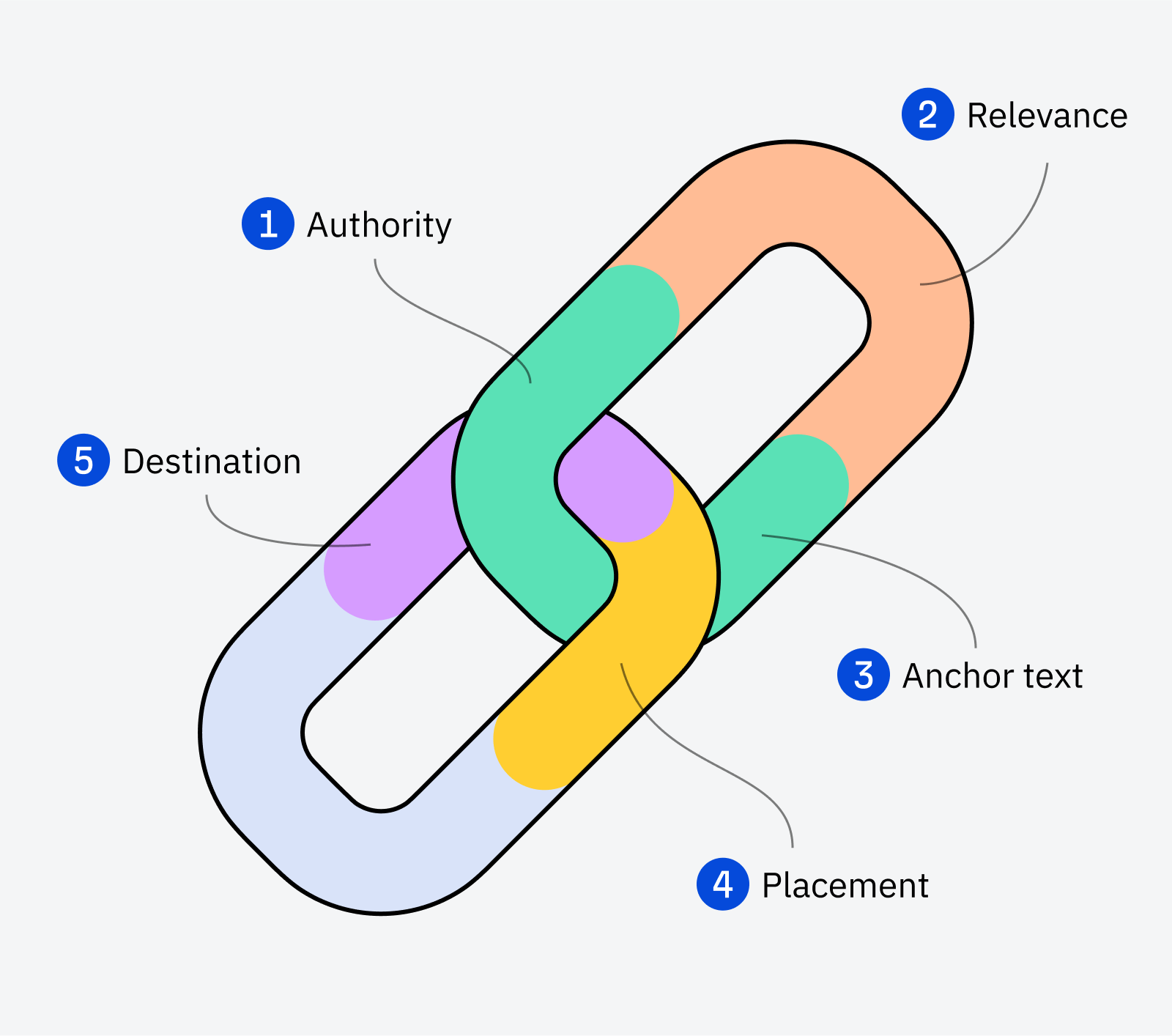
1. Authority
It seems intuitive that a link from The New York Times and a link from your friend’s small travel blog couldn’t possibly be treated by Google as equals. NYT is a world-famous authority, and your friend’s blog is hardly known even among their friends.
Over many years of building links, SEOs have gathered a lot of empirical evidence that links from more well-known and authoritative websites have a bigger influence on your page’s rankings in Google.
But how do you measure the “authority” of the website?
Well, according to an industry survey done by Aira, the most popular website authority metrics are Ahrefs’ Domain Rating (DR) and Moz’s Domain Authority (DA). With internally developed metrics (which often have DR or DA blended in them) holding the third spot.
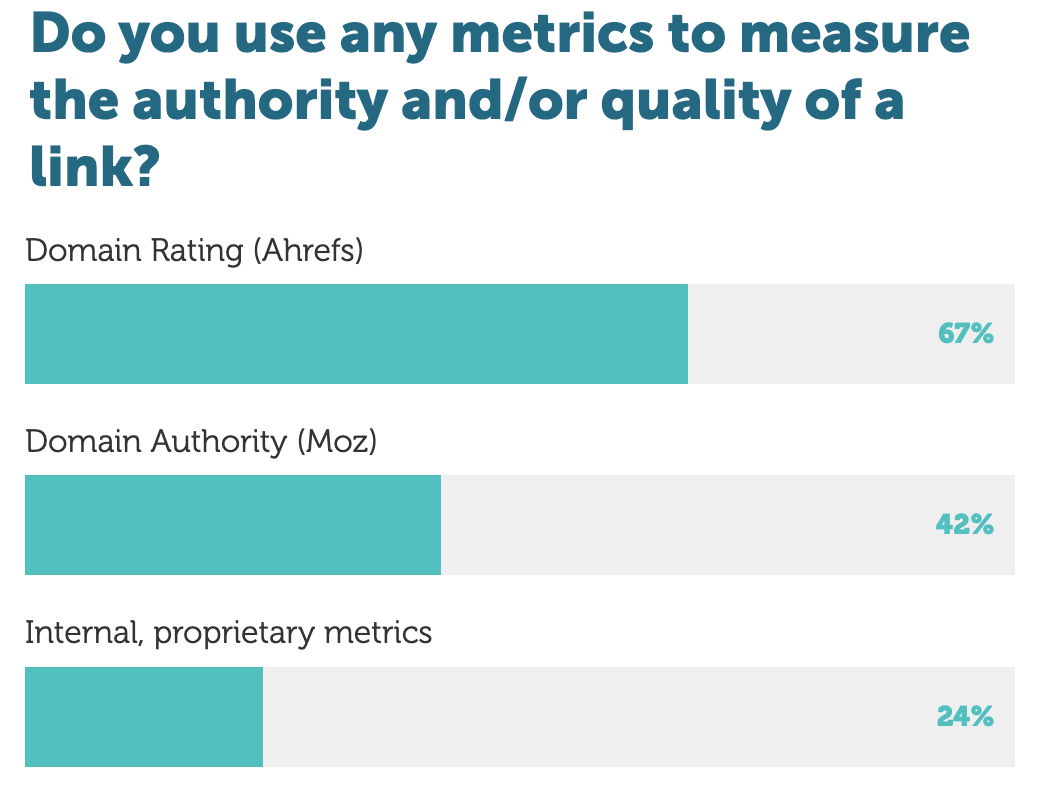
We actually have a free Website Authority Checker tool, which you can use to check the Domain Rating metric of any website:
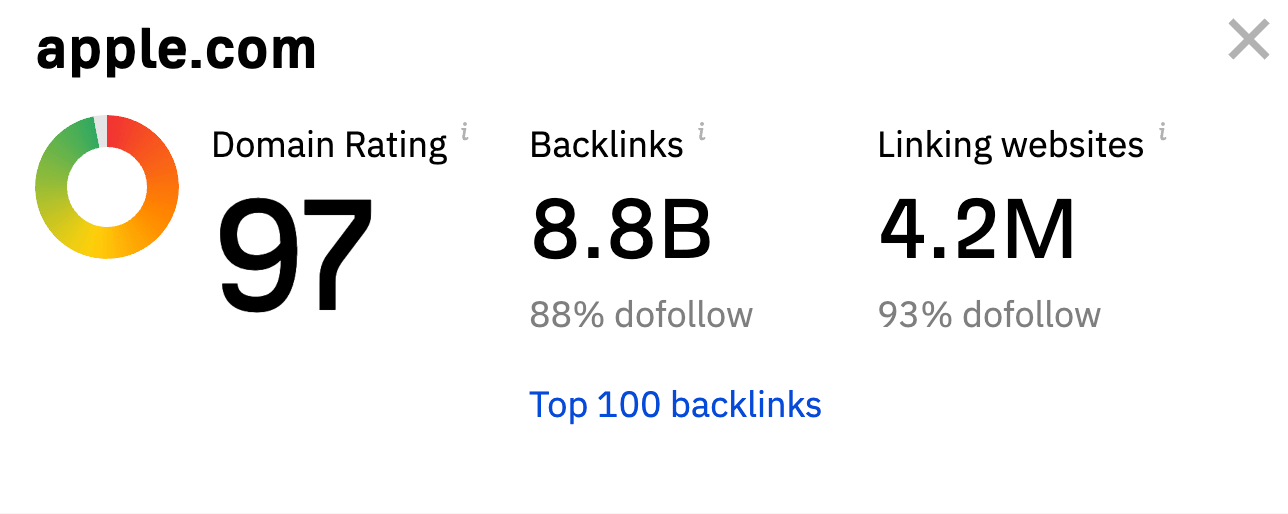
But other than the authority of an entire website, there’s also the authority of the actual page that is linking to you. Which is known to be calculated by Google with the help of the famous PageRank algorithm.
In simple terms, the PageRank algorithm is based on the premise that pages with more backlinks (and better ones) of their own cast a stronger “vote.”
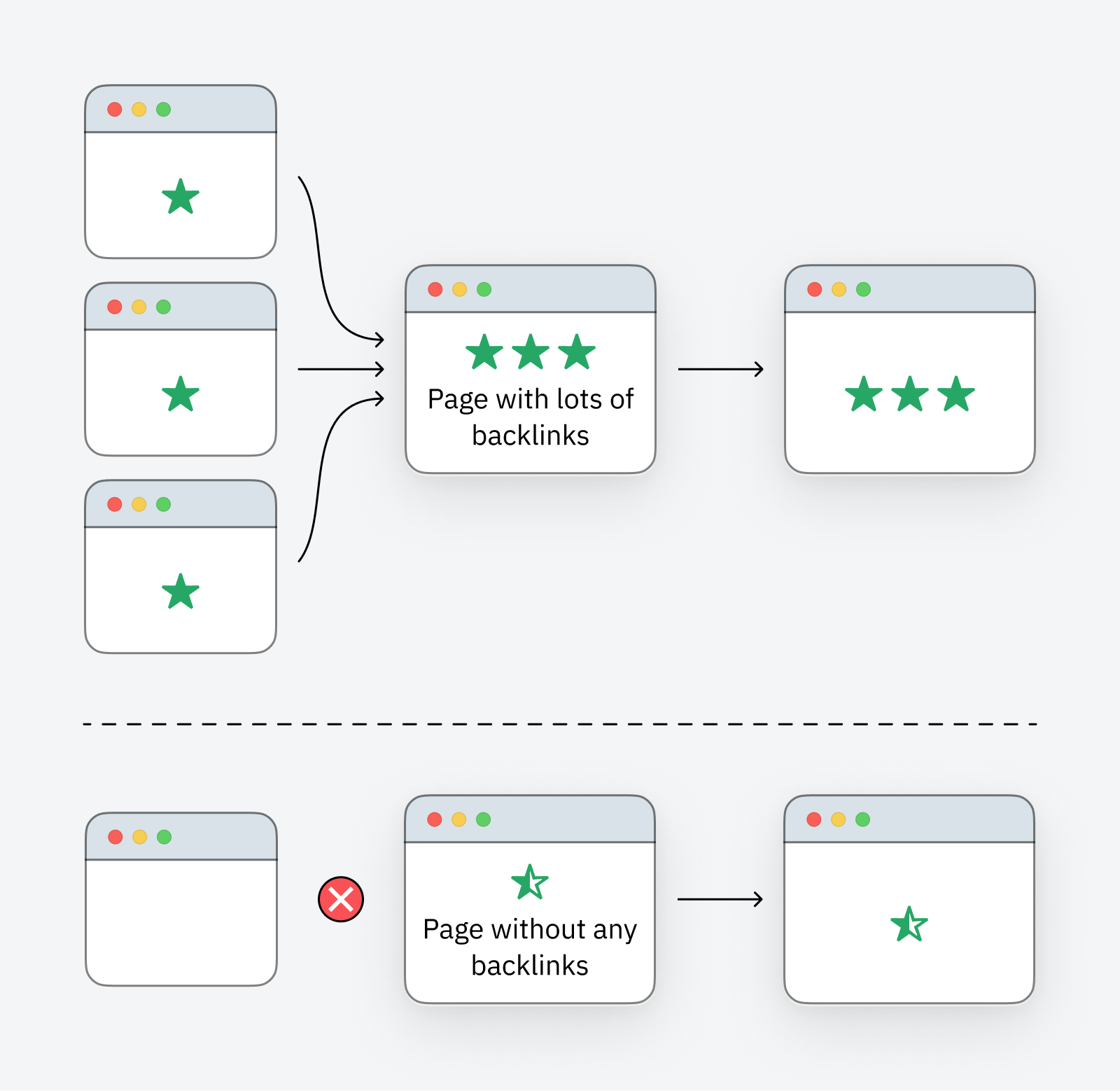
Here at Ahrefs, we have our own metric to measure the authority of the page. It’s called URL Rating (UR), and it is calculated in a fairly similar fashion to the original PageRank.
The UR of this very page that you’re reading is 30, and it has backlinks from over a thousand different websites (ref. domains):

And there’s one more thing you need to know about authority. If a backlink has a rel=”nofollow” attribute attached to it, it most likely doesn’t cast a “vote” toward a website that it links to.
2. Relevance
If you run a blog about health and fitness, links from other websites (and pages) on the same topic will have more weight in the eyes of Google compared to links from websites about cars or finances.
Here’s an excerpt from Google’s “How Search Works” guide that corroborates this theory (bolding is mine):
If other prominent websites on the subject link to the page, that’s a good sign that the information is of high quality.
But this doesn’t mean that you should avoid getting links from websites that aren’t on the same topic as yours. I can’t imagine any seasoned SEO saying: “No, please don’t link to my recipe website from dreamhost.com, a hosting website with DR 93.”
The thing is, whatever topic your website is about, there would be dozens of topics that are perfectly relevant while not the same.
For example, nutrition is very important for health and fitness. So it would be perfectly natural for fitness websites to link to articles about food. And if you want to work out regularly, you need to find time in your schedule for it, so linking to articles about time management wouldn’t be unnatural too.
In other words, relevance is a fairly malleable concept. Unless, of course, you try shoehorning links into places where they clearly don’t belong.
3. Anchor text
If you’re not already familiar with the term, “anchor text” is a clickable snippet of text that links to another page. In many cases, it succinctly describes what the linked page is about.
So it’s no surprise that Google uses the words in the anchor text to better understand what the referenced page is about and what keywords it deserves to rank for. In fact, Google’s original PageRank patent talks about this quite explicitly (bolding is mine):
Google employs a number of techniques to improve search quality including page rank, anchor text, and proximity information.
So how do you leverage anchor text when building links?
Well, it’s better that you don’t. The more you try to control how different pages link to you and shoehorn all the “right words” into the anchor text of your backlinks, the higher the chance that Google will suspect manipulation and penalize you for that. So it’s better to just let the author of the linking page decide how they want to reference your page.
4. Placement
Back in 2010, Bill Slawski brought to attention a Google patent that described a “Reasonable Surfer Model.” This model explains how the likelihood of a link being clicked may affect how much authority it transfers. And this likelihood is mostly determined by where the link is located on the page.
Let’s say there’s a webpage that consists of three blocks: content, sidebar, and footer. As a general rule, links in the content get more clicks because the content block gets the most attention from visitors.
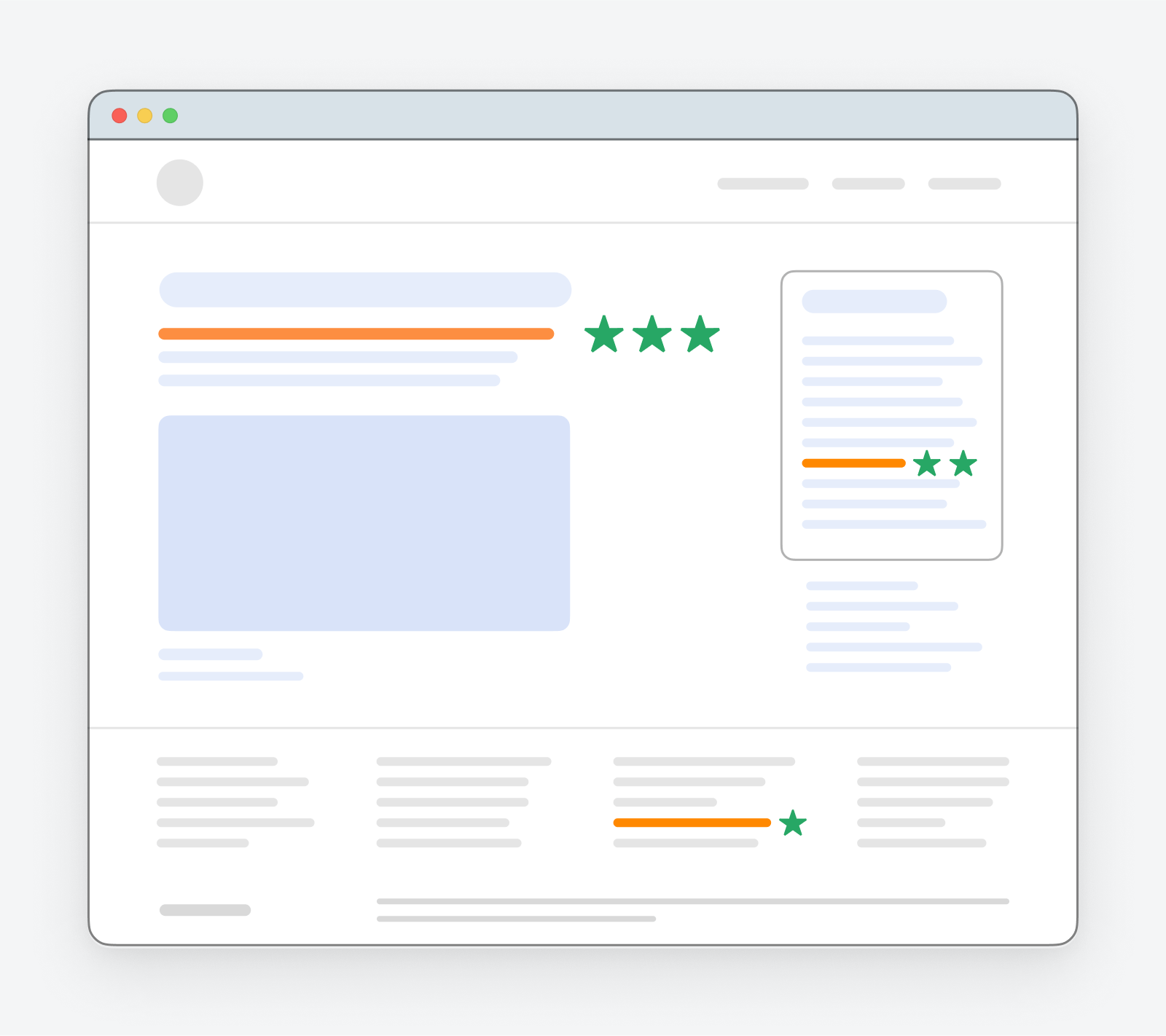
One other thing that can affect the CTR of a link is how high on the page it appears. Readers are more likely to click the links at the very beginning of the article rather than the ones at its very end.
5. Destination
When building links to your website, there are three general destinations where you can point them:
- Your homepage.
- Your linkable assets.
- The actual pages that you need to rank well in Google (usually called “money pages”).
And quite often, the pages that you need to rank well are also the hardest ones to get links to.
That’s because website owners generally prefer to link to informational pages where their audience can get value for free rather than commercial pages where their audience is likely to be pitched some product.
Thus, one of the most common questions in SEO is, “How to get links to boring pages?”
And the strategy that experienced SEOs usually suggest is to get lots of high quality links to your “linkable assets,” and then transfer some of that “link authority” to your “money pages” that you want to rank well in Google.
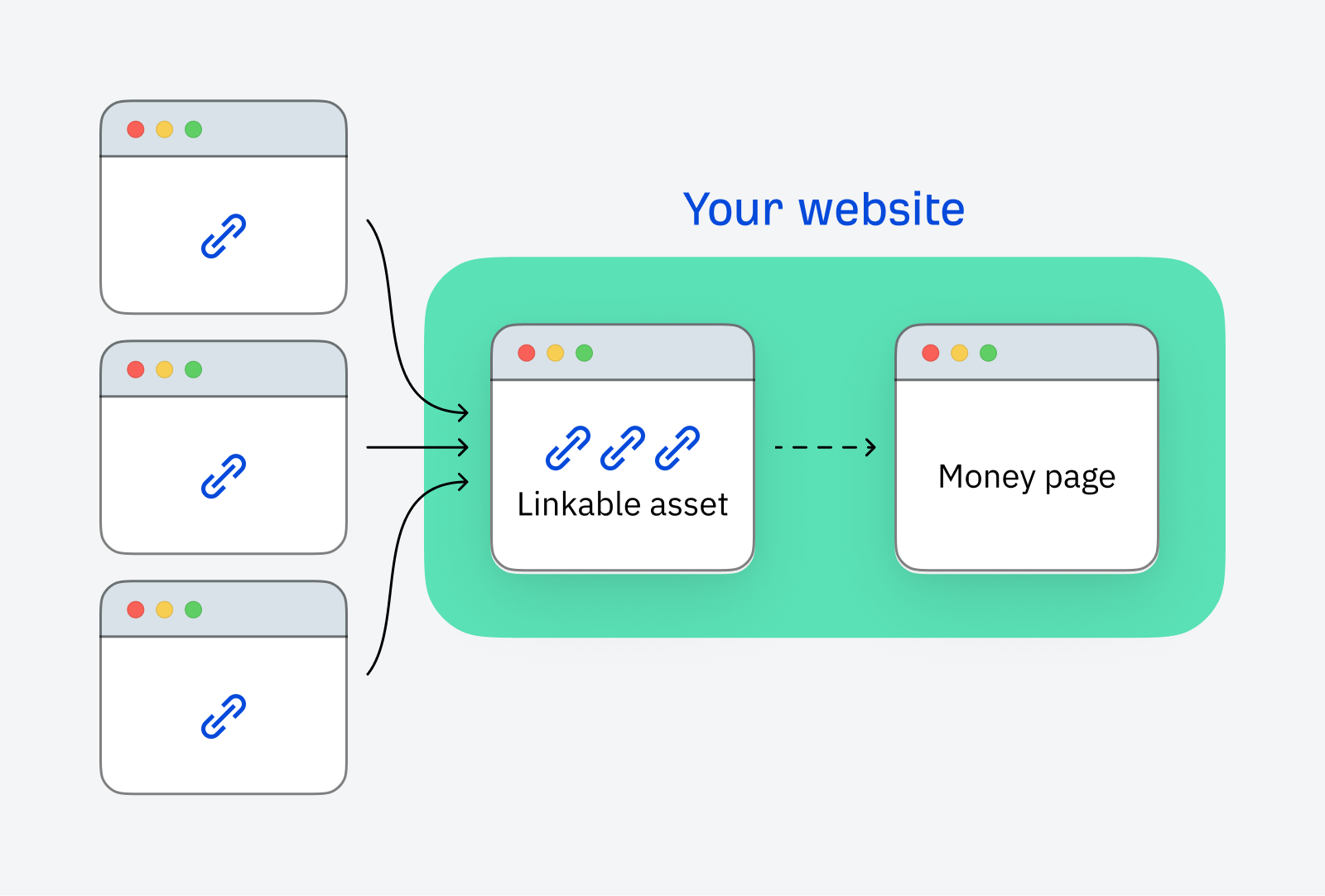
Leave a Reply